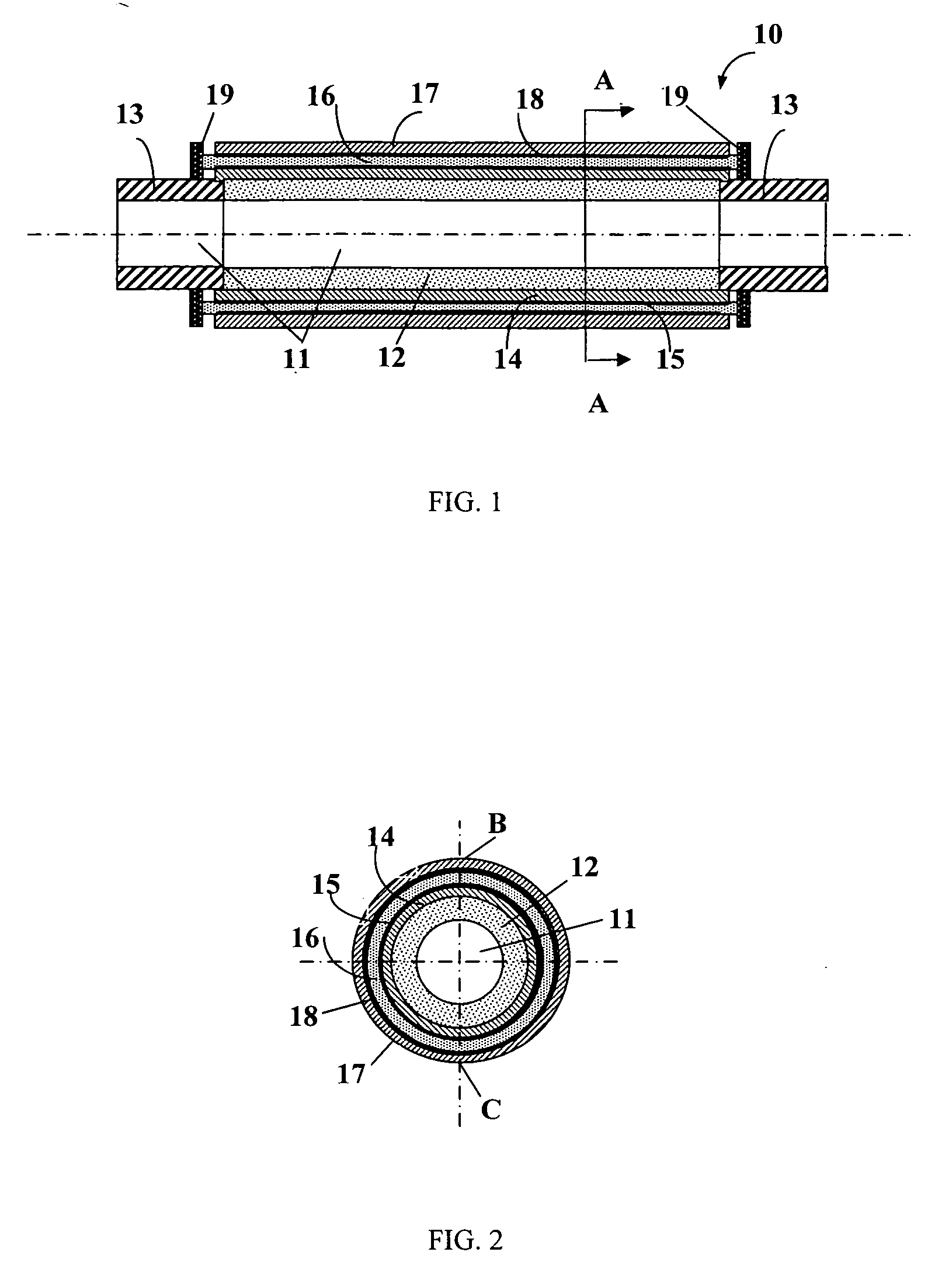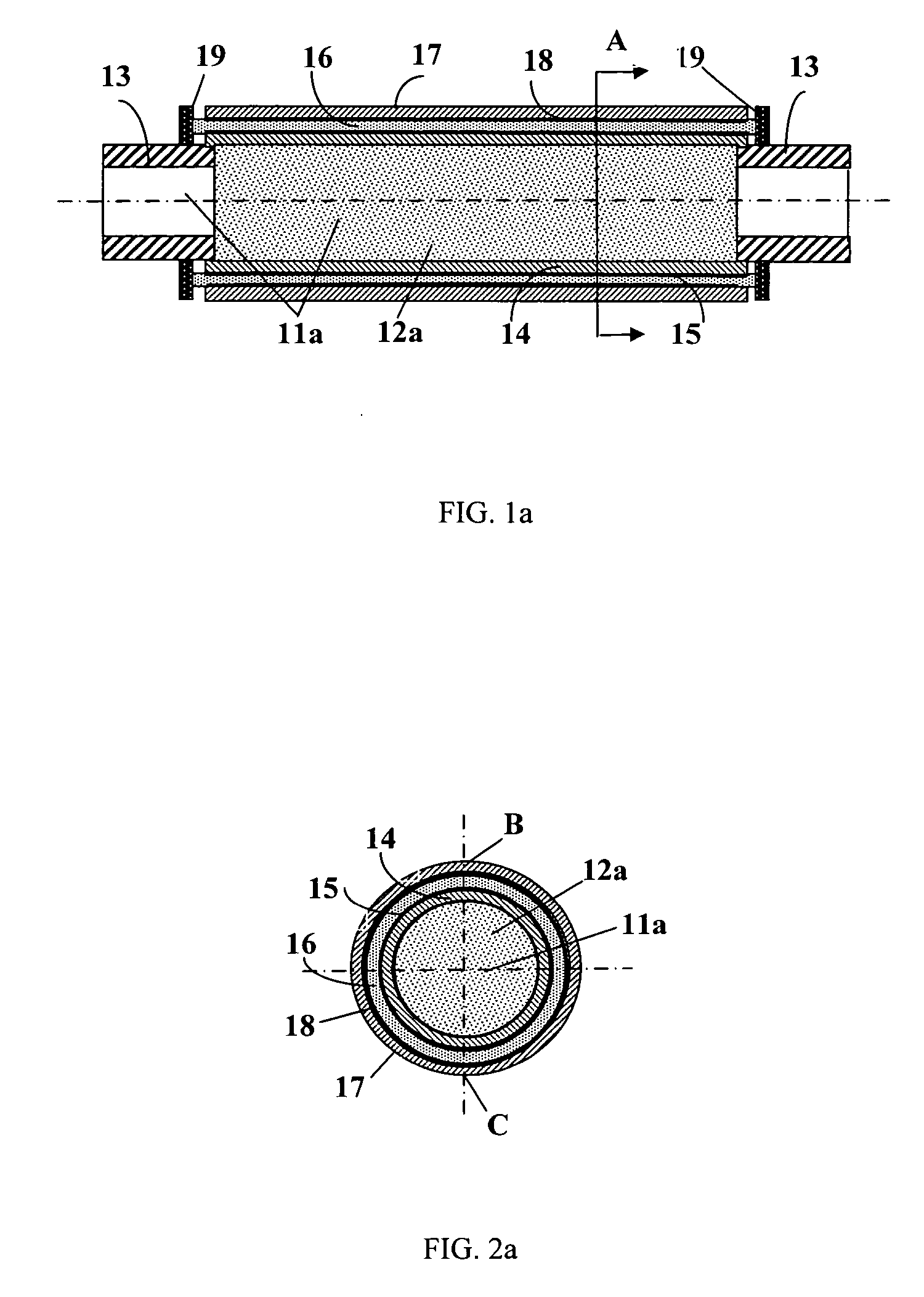Cao fuel cell stack with large specific reactive surface area
a fuel cell and reactive surface technology, applied in the field of fuel cell stack construction, can solve the problems of low power density per unit volume, large total power requirement, and serious limitations of direct liquid-feed fuel cells, and achieve the effect of substantially increasing the reactive surface area per unit volume and efficiently producing
- Summary
- Abstract
- Description
- Claims
- Application Information
AI Technical Summary
Benefits of technology
Problems solved by technology
Method used
Image
Examples
Embodiment Construction
[0022]FIG. 1 shows schematically a micro cylindrical fuel cell unit 10 constructed based on a micro porous tube, and FIG. 2 is a cross-sectional illustration of the fuel cell unit shown in FIG. 1. The micro fuel cell unit has a generally circular cross section. In the context of this disclosure, the term “generally circular cross section” means that the cross section may be circular, elliptical, pentagonal, or hexagonal, etc., although a circular shape is preferred. The term “micro” used in this disclosure means the fuel cell unit's diameter or the “hydraulic diameter” as defined in Fluid Mechanics is on the order of 1 mm. Depending on a specific design, the actual diameter of a cylindrical fuel cell unit can be greater than 1 mm or less than 1 mm in the range of micrometers. With reference to FIG. 1, the fuel cell unit 10 has a generally circular micro tube 11, which defines an axial flow path for a fuel stream or an oxidant flow stream and comprises a porous (permeable) wall secti...
PUM
 Login to view more
Login to view more Abstract
Description
Claims
Application Information
 Login to view more
Login to view more - R&D Engineer
- R&D Manager
- IP Professional
- Industry Leading Data Capabilities
- Powerful AI technology
- Patent DNA Extraction
Browse by: Latest US Patents, China's latest patents, Technical Efficacy Thesaurus, Application Domain, Technology Topic.
© 2024 PatSnap. All rights reserved.Legal|Privacy policy|Modern Slavery Act Transparency Statement|Sitemap



